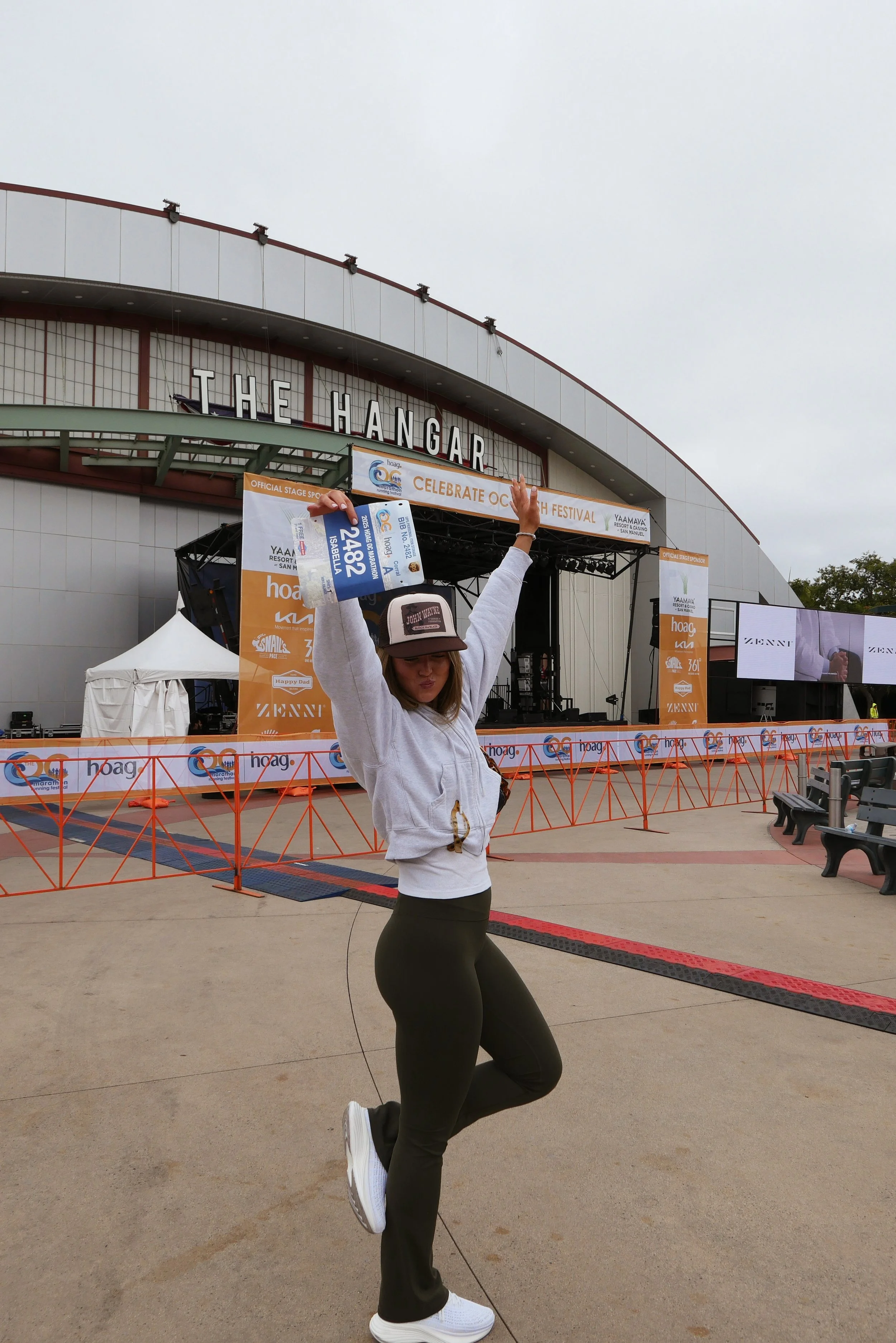How I Fueled My Marathon
By Bella Oldham, RD, LDN
As a Registered Dietitian and first-time marathoner, I approached race week the same way I approach clinical care: with intention, strategy, and an understanding that (in this setting) food is fuel. My goal wasn’t just to finish 26.2 miles—it was to run strong, stay ahead of fatigue, and avoid GI issues or bonking. Here’s what that looked like in practice, and the science (plus a little trial and error) that helped me get there.
Carb Loading: Why and How
Carbohydrate loading is one of the most well-supported nutrition strategies for endurance performance. The goal is to maximize muscle glycogen stores—your body’s most accessible fuel source during moderate to high-intensity exercise.
Research shows that consuming 8–12g of carbs per kg of body weight per day for 1–2 days before a race can enhance endurance and delay fatigue (Burke et al., 2011). For me, that meant aiming for ~500–700g of carbs per day in the 48 hours leading up to the race.
Day 1 Carb Load (~500–600g carbs):
I kept meals balanced but carb-forward—focusing on options I knew sat well:
Cinnamon bagels, granola, fruit juice, honey sweetened matcha
Low-fiber carbs like white rice and pasta
Easy-to-digest snacks: cookies, cereal, gummies
Every meal included lean protein — eggs, white fish, rotisserie chicken, greek yogurt. I kept a moderate fat intake, and skipped the raw veggies to reduce risk of GI discomfort.
Day 2 Carb Load (~600–700g carbs):
This was about topping off glycogen stores. I leaned on simple carbs that I had practiced with in training:
Pancakes with 100% organic maple syrup, dried fruit, electrolyte drinks (I love LMNT)
White rice, sourdough toast, soft tortillas, english muffins, pop-tarts
Strategic add-ons like maple syrup, honey, and juice
I kept a moderate to low protein, fiber, and fat intake.
Race Morning
I woke up early to give myself plenty of time to eat and digest before the 5:30 AM start. Around 3:30 AM, I was aiming for 150g carbs & landed on:
A big bowl of cereal with agave (quick carbs, low fiber)
G1M Sport + black coffee
About 30 minutes before the race:
1 ½ Nature’s Path Strawberry Pop-Tarts (~50g carbs) — but nerves were wilding at this point, so I only managed to eat about half. I sipped G1M Sport to compensate.
All in, I hit around ~200g of carbs before the race, spaced out to give my body time to absorb and avoid GI stress.
During the Race
To maintain energy and avoid the dreaded “bonk,” I followed the ISSN guideline of ~60g of carbs per hour, plus sodium and fluids. I practiced this strategy during long runs—not just to dial in my needs, but to train my gut to handle that amount of carbs per hour.
Here’s what I used:
BPN Go Gels every 20–30 minutes
G1M Sport drink mix (2 scoops with water) for consistent carbs + electrolytes
Salt sticks as a backup if I felt cramps coming on, and to have in case race-day temps climbed (~300–600mg sodium/hour total)
I tested a lot of products throughout training to figure out what worked for me. I tried the Maurten gels—considered top-tier by many runners—but they made me nauseous every time. Once I cut them out, I felt significantly better. That alone was a reminder that even the most hyped products might not work for your body. Nutrition is personal, and what matters most is how you feel on race day.
Post-Race Recovery
If I had one regret, it’s not having a protein shake ready to go at the finish. I didn’t bring one because, during my last few long runs, I felt so nauseous I was convinced I wouldn’t be able to get anything down post-run. I think cutting the Maurten gels helped.
Ideally, post-race recovery includes a mix of protein and carbs. Research shows that ~0.3g protein per kg of body weight supports glycogen replenishment and muscle repair (Jäger et al., 2017). I missed the shake window… but I did eventually make it to chicken nugs and champagne, can’t go wrong with chicken nugs and champagne (✋🏼✋🏼✋🏼).
Fueling for a marathon is individual. It takes some experimenting, a lot of listening to your body, and a willingness to pivot when something doesn’t feel right. But having a plan rooted in science and practicing it during training made a massive difference in how I felt going into the race.
I always recommend working with a sports RD if you’re training for a big endurance event. What works for one runner might not for the next. Having guidance, a fueling plan, and someone to help troubleshoot can be a game changer.
Disclaimer: none of the products mentioned are sponsored—just sharing what worked (and didn’t)
PS!!! Can’t live a full life on an empty stomach !!!!!!!!!!!!!!
Sources:
Burke LM, et al. (2011). J Sports Sci, 29(sup1), S17–S27.
Thomas DT, et al. (2016). JAND, 116(3), 501–528.
Jäger R, et al. (2017). JISSN, 14(1), 20.

